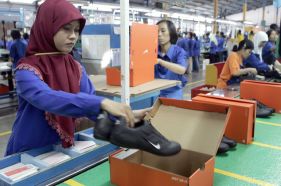NIKE Collegiate Baseball Cleats
Economic Impact on Production
by Cole Chandler
Nike’s Air MVP Pro Metal baseball cleats are the team issued cleats for the Point Loma Nazarene University Sealion’s baseball program. Nike, Inc. has done an exceptional job at creating a sustainable business by continuing on addressing impacts throughout their supply chain. Our world faces significant environmental challenges, such as water shortages, rising energy use, shrinking natural resource availability and the potential for drastic climate change impacts. These challenges had lead Nike to question its major expectations of their business and what success will look like for Nike in the future. Nike continues to improve on its innovation and design to minimize its footprint and address their own impacts up front, during the design stage of each of its products.
Considered Design is Nike’s standard for innovation and sustainability, which is constantly being cultivated to assess each of their products. Considered Design is a program that is aiming to reduce the overall waste throughout the designing and manufacture of each of their products. They are making a better effort to use environmentally preferred materials and eliminating the amount of toxins in the production phase of producing their products.
Nike has set up factories in Indonesia during the past year. (1) They choose to do this because it would offer the lowest rate for worker’s wages. These workers would be paid $3.50 each day, and approximately $21 per week. Although these wages seem incredibly low, Nike is matching the prices of the local minimum wage. Nike is not paying its workers any wages lower than the local minimum wage of the country it is producing products in. The minimum wage of Indonesia could always be increased in the near future, and when that day comes Nike will have to adjust its prices accordingly.
They choose to do this because it would offer the lowest rate for worker’s wages. These workers would be paid $3.50 each day, and approximately $21 per week. Although these wages seem incredibly low, Nike is matching the prices of the local minimum wage. Nike is not paying its workers any wages lower than the local minimum wage of the country it is producing products in. The minimum wage of Indonesia could always be increased in the near future, and when that day comes Nike will have to adjust its prices accordingly.
Nike’s production of cleats overseas has given foreign workers a stable job. This stable job has provided thousands of families a way to escape living in poverty, giving them a better overall standard of living and quality of life. Nike’s workers overseas have become more productive citizens, and have been given the ability to rely less on government assistance programs. Nikes products are now global manufactured in 43 countries, 744 factories, and have provided jobs to over 998,880 workers. (2) Some of the countries involved in the production of Nike products are developing regions such as Brazil, Argentina, Taiwan, and Bosnia.
From an economic standpoint, Nike will continue to produce its products in locations and factories where they have the possibility of gaining the most profit. This strategy can be seen as a way to provide citizens of developing counties stable jobs and better overall life, or Nike can be viewed as a corporate giant that is wrongfully intruding on countries to take advantage of the cheaper wages the country requires for its workers.
What do you think?